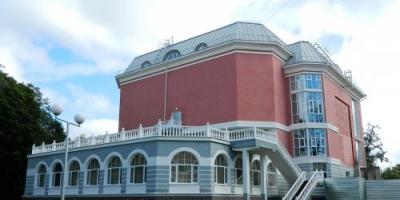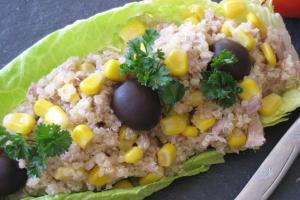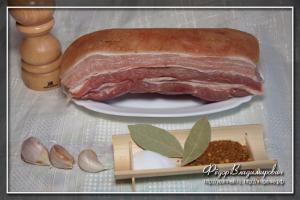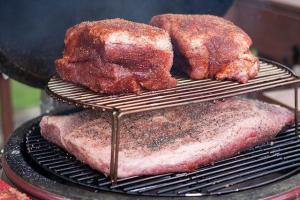Zemclunica is a divine berry. I'm not the only one who thinks so. Everyone who once planted on his personal plot zemklunik, will never give up this culture. What kind of culture is this - zemclunica? This is a strawberry-strawberry hybrid obtained by crossing varieties of large-fruited strawberries and Milanese strawberries.
There are many varieties of strawberries, but I will tell you about my favorite variety, Penelope, which I have been growing for about fifteen years. What is the difference between strawberries and ordinary garden strawberries? First of all, of course, taste. Since strawberry is a hybrid, it has a strawberry-strawberry taste.
As for its yield, during the entire time that this variety has been growing on my site, there has not been a single season for it to fail. Judge for yourself. Grows on any soil. It multiplies very quickly. Bushes in the second or third year have up to 20 peduncles.
If you consider that each of them has 10 berries, then you get 200 from the bush! Impressive, isn't it? However, gardeners who grow strawberries will say that there are a lot of berries, but they are small. But this is a relative concept. Of course, it cannot be compared with the Gigantella Maxim variety.
But, in my opinion, a berry measuring 3-4 cm is no longer a small thing. But what a taste and what quantity! But perhaps most importantly, this berry requires almost no care. Plants do not suffer from gray rot, since its peduncles are tall and are located above the leaves during flowering.
Fruiting is long (up to 1.5 months), and the berries are always clean, they do not need to be washed, so this variety is the best treat for children.
Penelope has one drawback - the weevil loves her buds. But, you see, even if you share half the harvest with him, I think you will still be satisfied with the harvest. For example, without much effort, I manually collect buds damaged by weevils (of course, not all, but only some).
I don’t want to encourage anyone to plant this variety on their plot. I just really like him, and I decided to tell readers about him.
Penelope bears fruit every year and very abundantly, so I don’t treat it with anything; those berries that remain after an invasion of pests are enough to enjoy, and when they become small, you can make excellent jam.
Some gardeners believe that this variety of dredge requires a lot of moisture, but I had no problems with watering, because, firstly, the area is quite low, and secondly, with the carpet growing method, the bushes completely cover the bed, and the soil always remains moist . However, in dry years additional watering will be very useful, since the berries will become larger and the harvest will be larger.
And now I will tell you how to prepare a bed for strawberries and how to plant them correctly.
Taking the seeds of the lupine, known to everyone and loved by many, I plant it wherever possible: next to a gooseberry bush, raspberry bush, any perennial and even annual flowers, combining the variety of lupine colors (white, pink, blue, purple, melange, etc.) d. flowers) with that color scheme, which is inherent in this piece of your site.
Then, when the plants produce a large amount of green mass, I cut it off, freeing the neighboring plants from the shade (lupine grows very strongly) and feeding them with nitrogen found in the ground on the lupine roots. All the green mass will be used to prepare a bed for strawberries, since lupine is a plant from the Legume family, it is the best nitrogen fertilizer for them. You will not need to buy expensive manure, because you yourself will not notice how quickly the lupine will again produce a lot of green mass and will delight you with its beautiful inflorescences for the second time.
All that remains is to make a bed and put lupine in it. To do this, we dig a ditch in the middle of the ridge, and then, having laid the green mass, we fill it up. Some gardeners believe that lupine leaves and branches should be placed in the garden bed after first wilting them. Well, you can do that too.
So, our bed is ready. Here we just need to clarify that, according to my many years of observations, it is best to plant strawberries after garlic. Why is garlic suitable? The thing is that, as many gardeners know, after digging up garlic, some amount of it will definitely remain in the ground, so you don’t have to specifically plant garlic (as many gardeners do) in a bed with strawberries, trying to protect it from diseases .
Garlic plants grow so powerful in the vicinity of this crop that it is sometimes difficult to dig them up. But keep in mind that garlic can cause a disease such as nematode on strawberries. I haven’t observed this yet, but gardeners with many years of experience claim that this happens.
Now about the garden bed itself. Its sizes and shapes can be very diverse: rectangular, L-shaped, round (for remontant and trellis varieties), square, long, narrow, wide - it all depends on your imagination, ease of care and cultivation purposes.
When you start planting, prepare “chatter” - a mixture of mullein and clay. The solution should be in the form of thick sour cream. If you don't have mullein, you can get by with clay and soil (if you have sandy soil). Some people think this is wrong. However, when planting rosettes in this way, I have never lost a single plant, since the survival rate has always been 100%.
So, having made a hole, poured water into it, dipped the roots of the rosettes into the “matter” (if the roots are long, more than 7 cm, they are cut off), they are lowered into the hole, straightened out over the entire depth (the roots should not bend). Then, in 2-3 steps, fill the hole with soil, making sure to compact it and avoid any voids near the roots, while ensuring that the apical bud (heart) is at soil level. Typically, such planting gives 100% survival rate of seedlings. You can put a lupine leaf, 1/3 teaspoon of granular fertilizer "AVA" in the hole, sprinkle it lightly with soil, water it and plant the rosette. This will provide additional nitrogen fertilizing, accelerating the development of the plant.
Strawberries variety Penelope during the flowering period
 What kind of sockets should there be for the survival rate to be so high? If you take them from your site, then they may have small white roots (usually these are plants that have not yet taken root and take a long time to take root when planted), but the rosettes should only be of the 1st or 2nd order, and the number of leaves there must be at least three on them. If you buy planting material, then you need to choose a rosette with three leaves and a good root system.
What kind of sockets should there be for the survival rate to be so high? If you take them from your site, then they may have small white roots (usually these are plants that have not yet taken root and take a long time to take root when planted), but the rosettes should only be of the 1st or 2nd order, and the number of leaves there must be at least three on them. If you buy planting material, then you need to choose a rosette with three leaves and a good root system.
You can plant rosettes by placing them in 2 or 3 rows opposite each other or in a checkerboard pattern. The distance between plants is 30-35 centimeters, and between rows - 40-50 cm.
If you plant rosettes in July, then next summer your garden bed will delight you with a good harvest of berries. Rosettes planted in late August - early September will produce 1-3 flower stalks next summer, and you will only be able to taste the berries.
As for pruning the leaf mass after fruiting, I do not do this, since this technique should be used only if your dredge was sick and the leaves were damaged. The Penelope variety does not need this; on the contrary, the leaves will serve as a good mulch in the winter, and most importantly, in the spring during recurrent frosts, so that your plants do not die.
And now about the beautiful things. Earthworms can be grown not only as an edible and useful crop that quickly enters the fruiting season, but also as ornamental plant. Everyone is used to the fact that you need to cook for zemkluniki separate beds, which are predominantly rectangular in shape.
I'm on own experience I was convinced that, in addition to beds, strawberries can be grown by planting rosettes around flower bed(and if you also have many flower beds and varieties of strawberries, then you can plant a certain variety around each one). This way you will save space, help the flower crops growing in the flowerbed to successfully overwinter if the frosts are too severe, and decorate the flowerbed, since in addition to flowers and berries, the leaves of the earthen grass remain green for a long time, and even go into the winter without shedding them.
You can edge the path leading to the house with strawberry bushes, and this technique will also save space and get an additional harvest of berries.
The carpet method of growing dredges is a very good one. It has a number of advantages. Firstly, it is less labor-intensive, since it requires virtually no weeding. Secondly, the frost resistance of plants increases, since there is little space between them, and the soil is almost completely covered with foliage.
Thirdly, you will not have problems with destroying the beds, since strawberries in this way are usually grown in a three-year crop, and they do not have time to form a large root system. At the same time, many gardeners who grow strawberries in the usual way complain that it can be difficult for them to destroy the bed, since the plants develop a powerful root system, and they have to practically “uproot” every plant.
I don't have such problems. Once I no longer need the bed, I cut off all the leaves and leave them directly on it (if the foliage is not damaged by the pest), then cover the bed with a 20-30 cm layer of straw, freshly cut grass and other organic materials that you have on hand. After this, a layer of mullein should be placed on the straw (mullein, especially fresh, speeds up the decomposition process), and then again a layer of hay. If there is no mullein, then add more grass. Then water the bed well (it’s better if it’s a solution of fermented weeds) and cover it with film. You can use any film - transparent or black - it doesn’t matter. The main thing in this case is that the leaves of the dredge rot very well and quickly.
Within a month (usually two weeks is enough) you can safely dig up the garden bed. It will be very easy and simple to do this, since you will not need any physical effort. You should only dig with a pitchfork; you should not do this with a shovel. By working with a pitchfork, you will also get rid of the remaining weeds and roots that have not rotted in the garden bed.
The disadvantages of the carpet method include the fact that the berries become smaller over the years, they differ in size and ripening period (even if you grow one variety). If you are just starting to develop your plot, then plant earthen grass in free places in garden beds and flower beds, around bushes and trees. This will allow you to have a decent harvest of tasty, aromatic berries in the second year after planting.
Good luck to everyone, health and big harvests this magical berry!
Svetlana Korolkova, gardener
Photo by the author
For those gardeners who value berries not for their size, but for their taste, strawberry-strawberry hybrids (or Diana, Penelope, Yellow Miracle, Marinka, Rose Glow) are suitable. They are very unpretentious, can withstand partial shading, are drought- and frost-resistant, and are unpretentious in terms of fertility soil and watering, they can also be grown using the carpet method.
Diana - strawberry hybrid middle period of maturation, gives excellent harvest juicy scarlet berries with increased sugar content. And the hotter the summer, the sweeter and more aromatic they are. The bush is quite powerful. Peduncles are non-lodging, located at the level of the leaves. The flowers are medium in size and bisexual. The berries are oval, approximate weight 9-10 g, maximum 18 g. The yield per bush is usually 250-300 g.
Penelope- a hybrid with round berries of a deep burgundy color. A very strong nutmeg taste, sweet to the point of cloying. Its bushes are exactly like those of a wild strawberry - with bright salad carved foliage. The bush is medium in size. Peduncles are slightly inclined, at the level of the leaves. The flowers on it are bisexual. The berry is oval in shape, with delicate pulp, approximate weight 7-8 g, maximum 22 g. The yield per bush can reach 200-250 g.
Marinka - strawberry hybrid with big berries. The berries are bright orange, irregular shape, the flesh is juicy and fragrant. Strawberry harvest at good care capable of producing 200-250 grams from one bush.
All these hybrids have inherited a significant ability to reproduce from their forest parents; in one season, a bush can reproduce up to sixty rosettes. Probably, nature made sure that together, as a bush, it would be easier for them to endure the winter cold and summer heat.
Yellow miracle - the sweetest yellow-fruited strawberry hybrid early period of maturation. If you look at the garden bed, you will not be able to resist the temptation to eat everything that is ripe at that moment.
However, you should not worry that the bushes are left without berries, because the next day there will be even more berries - the more often you pick them, the more strength the bush has to bear new berries. It can produce more than a hundred little yellow “suns” per season! For those who are allergic to red fruits, this miracle is a real salvation.
Very good and somewhat unique remontant hybrid Rose Glow(translated into Russian - pink dew). This strawberry hybrid blooms all season with huge semi-double bright crimson flowers. 1 flower has already faded, and the second one is just opening its petals - and so on until late autumn! The berry is dark burgundy, round, the size of a two-kopeck coin, and there can be up to two hundred such “coins” on a bush.
The bushes are low - 15-20 cm, the leaves are dark green with a border. 1 bush per season is capable of braiding 1-1.5 sq.m of area. You can plant Rose Glow as a border next to tall flowers and admire its beauty, enjoy the unsurpassed smell and taste of the berries.
Yellow decorative bead also blooms throughout the warm season, but its beaded berries, the size of a penny, are very sour. Flower - four or five-sided star yellow color. A bed in which pink-flowered and yellow-flowered varieties grow side by side looks very elegant.
Those who love not only to eat berries, but also to enjoy the beauty of plants, can decorate with these exotics alpine coaster or plant them in cascades, for example, in vertical beds made from used tires.
Falling down like garlands, it will look wonderful.
Nadezhda Zagoriya. The bush is tall, fairly compressed, the peduncles are thick, erect, much higher than the leaves, the flowers are large, bisexual. The berries grow in an oval-conical shape, the approximate weight is 8-9 g, the maximum is 28 g. The harvest from a bush can be 250-450 g.
Muscat Biryulyovskaya. Bush of average development. The flower stalks themselves are long and inclined. The flowers are small, bisexual. The berry takes on an elongated shape, with a neck, and becomes dry and dense. Approximate weight 6-8 g, potential 20-22 g. The yield per bush is on average 200-250 g.
Strawberry. Bush of normal development. Peduncles are usually higher than the leaves, the inflorescence is umbellate. The flowers are medium-sized and unisexual. The berries are slightly conical, the approximate weight is 5-6 g, the maximum is 8-10 g. The harvest from the bush can be harvested in 200-250 g.
Report. The bush is tall and powerful. Peduncles are higher than leaves and slightly inclined. The flowers are small, bisexual. The berry takes on a slightly conical shape. The approximate weight is 5-7 g, potential 10 g. The harvest from the bush can be harvested in 200-250 g.
Raisa. The bush grows tall. Peduncles are erect and usually higher than the leaves. The flowers are bisexual and large. The berry is oval-conical in shape, approximate weight 8-10 g, potential - 30 g. The yield per bush is usually 250-350 g.
Candied nutmeg. The bush is medium in size. Peduncles are at the level of the leaves. The flowers are usually bisexual. The stalks are long and easily torn off. The berry is elongated-flat in shape, quite dense, dark red. The approximate weight is 6-8 g, the maximum is 18-20 g. The yield per bush is no more than 200-260 g.
LOVE EARTHBERRY.
Most gardeners have already heard about zemklunik. But reviews about it are the most contradictory. Some cook jams and compotes, dry them... while others collect 2-3 handfuls. Some people admire this berry, while others say “garbage.”
Zemklunika- this is a new plant that appeared as a result of crossing two crops: garden strawberries and strawberries. U earthworms there is an author - Tatyana Sergeevna Kantor. It was she who managed to obtain a unique hybrid in the 70s of the last century.
This just raises the question: where to buy? The seedlings are available in markets where private traders sell them, saying they don’t remember the name. This is how old, incomprehensible varieties with small berries are distributed. I always buy from a nursery, where they propagate varietal earthworm. Yes, there are cases of mis-grading - but not so often! You can also buy from a neighbor...honest and correct. In such cases we will get varietal seedlings.
If you are just starting to develop a plot, then plant these varieties in free places in ridges and flower beds, around shrubs and trees. This will allow you to have a decent harvest of tasty, aromatic berries in the second year after planting.
Bushes near earthworms tall, peduncles located at the level of leaves and above. The berries are medium size, weighing 8-12 grams. The color of the berries is red with purple tint. When unripe, one side is white or pink. The berries are delicious both fresh and processed. They ripen simultaneously with mid-season varieties of garden strawberries. Winter hardiness is high.
For a good harvest, you need to properly fill the bed. I think we can do this! When planting, make sure that the growing point is at soil level: deepening leads to a low yield, and exposing the roots leads to the death of the plant in winter.
When planting, consider: in what form will you plant the seedlings? .If the root system has an earthen lump (seedlings in cups, bags...), then it can be replanted throughout the warm period - even while flowering. With an open root system earthworm planted from the end of August for a month. It is not recommended to plant in dry weather. After planting, abundant watering is necessary, and then mulching the soil with humus, peat or grass.
At one place earthworm bears fruit up to 4 years. To avoid being left without berries next year, replace the bushes gradually over two years.
Care. We want good harvests– we process, weed, water and feed the dredges. We fertilize at least 3 times:
Before flowering
During flowering,
After fruiting.
With this we help plants, during difficult periods of the growing season, gain strength and prepare for the new season. And one more thing: the plant produces a lot of whiskers - remove them in a timely manner. This is done throughout the summer: since the growth of the mustache and then the growth of rosettes are depleted mother plant. This leads to a sharp decrease in yield and crushing of berries.
With the arrival of autumn, you should pay attention to the shelter: spruce branches are best. It promotes snow retention, retains heat and gives a pine scent. If you follow at least these rules, you are guaranteed a high and stable harvest.
There are enough varieties of dredges: Nadezhda Zagorya, Raisa, Rapport, Candied Muscat and others. I have three varieties on my plot: Kupchikha, Penelope and Muscat Biryulevskaya...
MERCHANT'S WOMAN
The berries are elongated and resemble an irregular cylinder in shape. The pulp is juicy and tasty. The yield is average, but the commercial quality of the berries is very high level! Weight of berries is 12-20 grams. Winter hardiness is high, the variety is immune to powdery mildew and gray rot. The plant can withstand cold and unfavorable conditions. Gardeners adore it for its unpretentiousness and decorativeness.
Ripening: late June - early July.
PENELOPE

The bush grows to medium size and bears fruit abundantly and annually. The berries are small and neat, round in shape and with delicate pulp. The plant does not need additional pollination. Not afraid of diseases, the variety is immune to any types of fungal diseases. The threat is the weevil, but due to the high yield the damage is almost unnoticeable. 250-300 grams per bush, weight – 10-20 grams, berry color – cherry with a purple tint, ripening – early July.
MUSKATNAYA BIRYULEVSKAYA

The bushes are medium-sized with inclined peduncles. The berries are dense, suitable for transportation, and have an elongated shape. Productivity and winter hardiness are high.
Zemklunika- a real find for gardeners who value their time and want to grow unusual plants well adapted to harsh climates. There is no arguing about tastes... BUT it’s better to try once than to hear a hundred times! Go for it!
EZHEMALINA
New century - new miracles. In the garden you won’t surprise anyone with blueberries, actinidia, or even peach... I want something new... I want to dwell a little on every month. This crop cannot be called a novelty, despite the fact that it is difficult to see an ordinary gardener in the garden.
The first varieties of it were obtained back in the time of I. V. Michurin and even earlier. What is the secret of success? The plant is not demanding and beautiful, the berries are tasty and healthy. Harvesting from the bush is very simple, because they are practically devoid of thorns. And the plants themselves are good - they don’t spread around the area like raspberry bushes, but grow where they were planted.
A hybrid of blackberries and raspberries was the result of crossing these two crops in order to obtain a plant that combines high yield and unpretentiousness, resistance to drought, absence of thorns and frequency of fruiting. The first such hybrid was obtained from the USA, it was named after its creator - LOGANBERRY. In Russia, this variety is still valued and sold. But the most outstanding varieties were obtained by English breeders relatively recently. The most famous varieties of raspberries are “Bedfort”, “Dzhant”,
"Tayberry"

Varieties show off minimum quantity thorns on their shoots, resistance to diseases and pests, and unpretentiousness to growing conditions. They form large, delicious berries, devoid of excessive sweetness and unpleasant acidity.
Moreover, the winter hardiness of these varieties is high and they are easily tolerated. harsh winters. Ezhemalina characterized lush flowering and interesting arched shoots. These varieties are good because they absolutely do not form root shoots.
Another positive property is their late flowering, due to which they are rarely subject to return frosts. This property allows amateur gardeners to obtain annual and stable harvests. By the way, about flowers: they are very beautiful, so shrubs can also be used in decorative purposes. The flowers, replacing each other, can delight the eye for up to 30 days; they are milky white in color and collected in racemes.
Flowers are replaced by fragrant and sweet berries; at the time of ripening the bush every day literally strewn with fruits. Fully ripened berries exude a unique aroma unique to raspberries and are painted in a noble color with shine. Interesting point: fruits every day ripen gradually, which allows you to extend such a pleasant period.
You can buy raspberry varieties, you can cut them by rooting the tops of the shoots, both lignified and green, the main thing is a nutrient mixture and enough moisture. Place the raspberry in the area of its most illuminated part, retreating from other plants or from another raspberry bush by 2-2.5 meters from others. After planting, which is carried out in planting holes, the seedlings must be watered under the bush (5-6 liters each) and the bush area must be mulched with non-acidic peat or humus (up to 5 cm). The next day, it is advisable to trim the seedlings, leaving growths with 4-5 buds, 30-35 cm long, on the surface.
Since the shoots of the raspberry are large, quite thin and can lie down, it should be grown on a trellis. After fruiting, all shoots that bore fruit are cut back to soil level.
From new varieties every day I want to note the variety " Cumberland»

The fruits of the raspberry do not fall off and are perfectly stored - both fresh and frozen. The harvests are plentiful. But the main plus is that black raspberries contain more vitamins and other important substances than raspberries and blackberries combined. I have already tried a variety with black berries, and now I bought one with yellow ones. I want to make a garden bed of alternating raspberry bushes of different colors. If there was a goal, the wish would come true. Try it too! Harvest to you!
Anufrenkova Tatyana Fedorovna, Yaroslavl
Zemclunica is an amazing representative of the kingdom of berry plants, incorporating only the most best qualities their closest relatives are strawberries and wild strawberries. This unusual hybrid is winter-hardy, unpretentious and undemanding to care, and its fruits have a more pronounced, fragrant aroma and a pleasant dessert taste. Let's try to take a closer look at this interesting plant, the history of its origin, as well as consider the most famous varieties of strawberry, the features of its cultivation and care for it.
Zemklunika: a little history of origin
The first specimens of the described hybrid were obtained by the famous breeder N.K. Smolyaninova, who crossed strawberries of the Milanskaya variety with strawberries of the Seyanets variety. The result of this experiment was an unusual hybrid, the fruits of which had a rich, fragrant aroma. Its only drawback was the increased sterility of the flowers, as a result of which the berries on the bushes were set very weakly.
T.S. managed to eliminate this drawback. Kantor is a famous female breeder and geneticist, the author of many hybrids that have received international patents. After long and painstaking selection work, she developed strawberry-strawberry hybrids with well-set fruits. These plants were registered as a new species of strawberry and received the author's name zemklunik (exactly so, without the letter “b” in the middle of the word - so that no one could confuse the name of this promising species with the usual strawberry).
Zemklunika: varieties and their features
Today there is a fairly extensive list of varieties of strawberries, enjoying well-deserved respect and demand among modern summer residents and gardeners. Among them, it should be noted such as: Nadezhda Zagorya, Muscat Biryulevskaya, Strawberry, Penelope, Report, Candied Muscat, Diana. The productivity of these varieties of dredges varies from 200 to 400 g of berries per plant, which approximately corresponds to the weight of fruits obtained from one bush ordinary varieties garden strawberries.
Higher yields and heavier weight of fruits are characteristic of the zemklunik varieties bred in Bryansk by the largest breeder and professor S.D. Aitzhanova, namely, people like Kroshka and Anastasia. Another variety belonging to the authorship of this ingenious breeder deserves special attention, namely - earthworm Kupchikha. The fruits of this wonderful variety differ from ordinary garden strawberries not only in their larger size, but also in their amazing, strong aroma and extraordinary taste. The berries usually ripen at the end of July - beginning of July.
Visually, the Kupchikha strawberry is similar to large-fruited garden strawberries: it has almost the same creeping shoots with internodes, compact rosettes, emerald green trifoliate leaves and flowers white. However, in terms of the number of flowers, this wonderful variety is superior not only to ordinary strawberries, but also to similar plants - for example, on one Kupchikha bush there can be 12-25 flower stalks, numbering up to 250 flowers.
The fruits of the first harvests reach a length of 5-6 cm and a weight of up to 20 g, but, alas, later the berries become smaller - up to 3-4 cm with a weight of 6-8 g. Despite this small disadvantage, the berries are stored well and tolerate transportation well . Regardless of the variety, the fruits of the dredges have good density, due to which they do not soften during heat treatment, maintaining their original shape, and produce an aromatic syrup of a rich, dark color.
Reproduction, cultivation and care of earthworms
Despite the fact that this plant is quite tolerant of light shading, it should be grown in well-lit areas if possible. If your site cannot boast of a substantial area, then you can plant bushes under fruit trees or even in the most prominent areas of the garden - for example, in a flower garden or flower bed.
When planting young bushes, our country site recommends maintaining an interval between them of 25-35 cm, which will allow the plants to fully develop in the future and throw off a large number of strong shoots with rosettes of “babies” (by the way, they are not at all difficult to plant, since this hybrid is quite fast and easily settles into a new place).
Caring for earthworms is simple and involves standard procedures - such as timely watering, weeding and fertilizing, to which this plant is very favorable. Remember that during flowering and fruit set, any berry crop needs good, conscientious watering - especially in hot and dry weather.
An important difference between the described representative of the world of berry plants and ordinary garden strawberries is that due to the intensive consumption of nutrients for the formation large quantity flowers and young shoots, this amazing hybrid requires good, high-quality feeding. For this reason, in addition to adding mineral and organic fertilizers to the soil before planting bushes, already planted plants need to be fed approximately once every 14 days with liquid organic fertilizers(calculation: 1 sq. m – 10 l). Periodic fertilizing with mineral fertilizers is also not prohibited.
Foliar fertilizing (a method of applying fertilizers in which nutrients are absorbed by plant leaves) also demonstrates brilliant results. In relation to this hybrid, the following foliar feedings will be very effective, namely those carried out:
- - in the spring season, when plants enter the growth phase - with a solution of potassium permanganate (0.2%), boric acid(0.2%), ammonium molybdate (0.2%);
- - during the period of blossoming of flowers and the formation of the first ovaries - with a weak solution of zinc sulfate (at the rate of 10 g per 10 liters of water);
- - during the August season - with a urea solution (at the rate of 30 g per 10 liters of water).
Otherwise, the agricultural technology for cultivating these hybrids is almost similar to the conditions for growing and caring for garden strawberries ordinary varieties. Moreover, in contrast to it, dredgeweed is a less demanding and capricious crop, and in addition, it is also resistant to pests and diseases. Practical observations show that these hybrids are not afraid of ticks (one of the most dangerous pests berry crops), are not afraid powdery mildew and gray rot, which greatly facilitates the cultivation of dredges in the garden.
In the last few decades, something like zemclunica has become especially popular among summer residents and owners of personal plots. Its advantages are frost resistance, low susceptibility to disease and an incomparable aroma.
The name “earthberry” is derived from the words “” and “”; this berry was obtained by crossing its ancestors and absorbed the best strawberry-strawberry qualities. Without exception, all varieties of earthen grass are distinguished by much more powerful bushes; its fruits are visually similar to and have a shade of purple.
In the first years, dredge berries are larger than the average (20 or more grams), but over time they become smaller to an average weight of 6–8 grams. In this material you can find the most popular varieties of dredges with photos.
"Merchant's Wife"
It is considered a relatively new variety of zemklunik, which was bred in the second half of the 80s of the last century. The fruits of "Kupchikha" have an elongated cylindrical shape. Outwardly, they look a little dried out, but the taste of these berries is very sweet and juicy. The productivity of the "Kupchikha" dredge (300 g per bush) cannot be called high, which is more than compensated by its good presentation and large (12–20 g) berries; additional advantages are complete immunity to and. 
Did you know? Strawberries don't just grow on bushes - strawberry trees grow in the mountainous regions of India and south-central China, New Zealand and Australia.
"Raisa"
This variety of dredges tolerates both rain and heat equally well and is characterized by a high growth rate. “Raisa” is not afraid of spring frosts on the ground and in the air; the bushes of this variety bloom very profusely. The fruits of this variety are distinguished by an oval-conical shape, quite hard to the touch and very sweet in taste, the aroma of “Raisa” is purely strawberry, which makes it ideal for making jam. The yield of the "Raisa" dredge is 350–400 g per bush, the weight of the fruit reaches 25 g. 
"Gift"
This variety of dredges is not widespread in the CIS, and there is also little information about it. Productivity is from 250 to 350 g per bush, with a berry weight of 10–15 g. Feels great in conditions high humidity and small quantities sun rays, therefore it is popular among Russian summer residents. 
Did you know?The largest strawberry weighing 250 grams was grown by Japanese farmer Koji Nakao from the Japanese city of Fukuoka; its dimensions were 8x12x10 cm.
"Penelope"
It belongs to the mid-early varieties of dredges; it showed excellent results both in middle lane, and in the southern regions. The bush of the plant is medium in size and consistently bears fruit even in unfavorable weather conditions.  The fruits of the "Penelope" dredge are somewhat smaller compared to other varieties of dredge. "Penelope" is not afraid of any fungal diseases. The main threat to the variety is, but even these losses are more than compensated by the high yield (250–280 g per bush).
The fruits of the "Penelope" dredge are somewhat smaller compared to other varieties of dredge. "Penelope" is not afraid of any fungal diseases. The main threat to the variety is, but even these losses are more than compensated by the high yield (250–280 g per bush).
"Student"
This one was invented by Russian breeders. It is distinguished by an extended fruiting period, small, aromatic and amazingly sweet berries. The fruits have a traditional elongated shape, the crop is immune to frost, rot, fungus and strawberry. Productivity - 300 g per bush, ripening period - second half of July. 
Important! In order to achieve maximum yield, the dredges need to be fed twice a year - in spring and autumn.
"Diana"
Probably the most unusual variety - the bushes of "Diana" are tall, and the berries are oval, their weight can reach 20–25 g. It is distinguished by its excellent taste qualities, which makes the berry an indispensable product for making preserves and jams. “Diana” bears fruit from late June to early August, which is the reason for its deservedly high popularity. 
"Nakhodka"
One of the most unpretentious varieties, the berry is no different large sizes, but at the same time very sweet with a pronounced strawberry flavor. The shape of the Nakhodka fruit is very similar to strawberries and is cone-shaped. “Nakhodka” bears fruit from late to mid-July. 
"Hope of Zagorye"
Experts note high yield(up to 450 g per bush) of this variety, the bushes are very tall, which is why they attract attention. The shape of the fruit is round-conical, there can be up to 30 of them on a bush, the achenes of “Nadezhda Zagorye” are yellow-red in color and are lined on the surface of the berry with a continuous mesh. The taste of this juicy and elastic berry with a distinct nutmeg flavor, Fruits from late June to early July.

Important! On heavy soils, such as clayey soils, strawberries grow poorly. The clay fraction, forming compacted layers, is capable of retaining moisture for a long time, which leads to rotting of the roots.
"Report"
Tall and spreading, traditionally resistant to frost and sudden temperature changes. Is different abundant flowering and the same large number of fruits. The berries are red-brown in color, firm, juicy and aromatic, and stay on the stalks for a long time. This variety needs timely care - watering and fertilizing. Ripens quite late - towards the end of July. 








